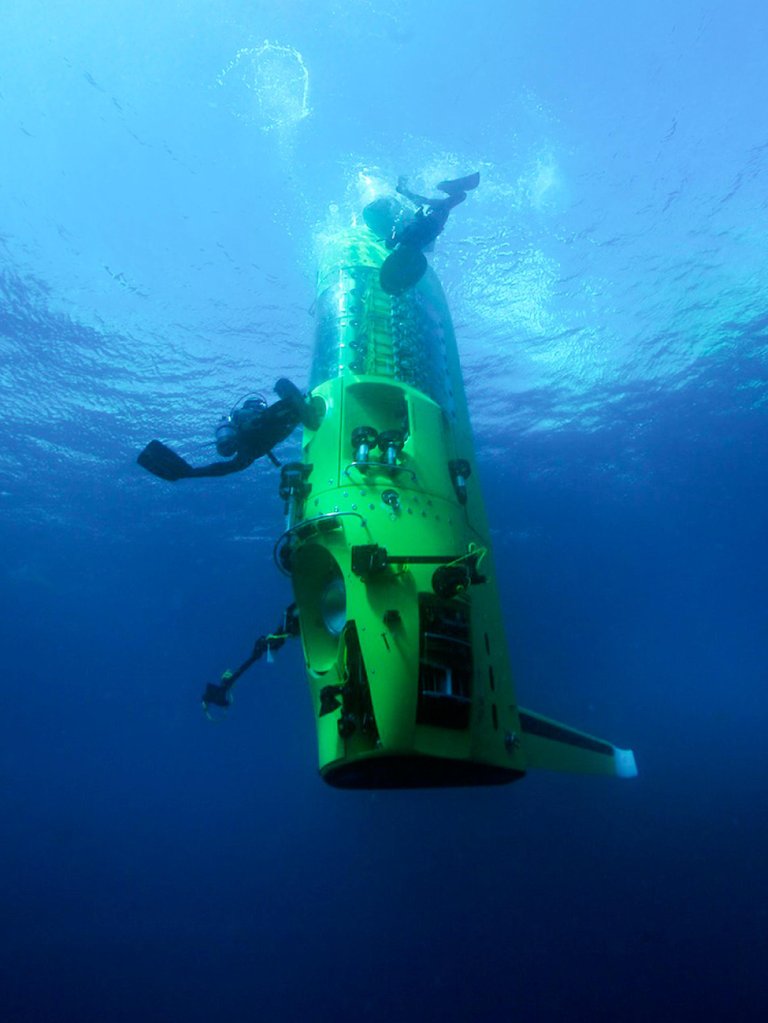
The deepest point ever reached by man is 35,858 feet below the surface of the ocean, which happens to be as deep as water gets on earth. To go deeper, you'll have to travel to the bottom of the Challenger Deep, a section of the Mariana Trench under the Pacific Ocean 200 miles southwest of Guam. And you're going to need a shovel.
Two expeditions have successfully plumbed the almost-7-mile depths of the Challenger Deep. In 1960 U.S. Navy Lt. Don Walsh and Swiss oceanographer Jacques Piccard (no relation to Jean-Luc) sat through a nearly 5-hour descent in a submersible, then spent 20 just-to-say-we-did-it minutes on the bottom before surfacing. In 2012 director James Cameron repeated the feat in Deepsea Challenger, a one-seater made chiefly of syntactic foama blend of tiny glass spheres and epoxy resin that not only floats (a good thing in a submarine, assuming one doesn't want to remain underwater forever) but also stands up to the extreme pressures at that depth. Cameron's quasi-candy-bar-shaped craft was able to make the trip in half the time. He collected some data from the bottom, but, alas, no car keys.
Now, if you're talking just a guy in the water, no cozy little capsule, the answer becomes less definitive. Officially, divers employed by the French underwater exploration outfit Comex (Compagnie Maritime d'Expertises), breathing carefully formulated gas mixtures and employing an elaborate pressurization regime known as saturation diving, hold the depth record of 1,752 feet. Unofficially, at least one person in a position to know suggests U.S. Navy divers may (wink, wink) have surpassed that depth, but details are, you guessed it, "classified."
Hi! I am a robot. I just upvoted you! I found similar content that readers might be interested in:
http://www.popularmechanics.com/science/environment/a11136/how-deep-underwater-can-a-human-really-travel-17135739/